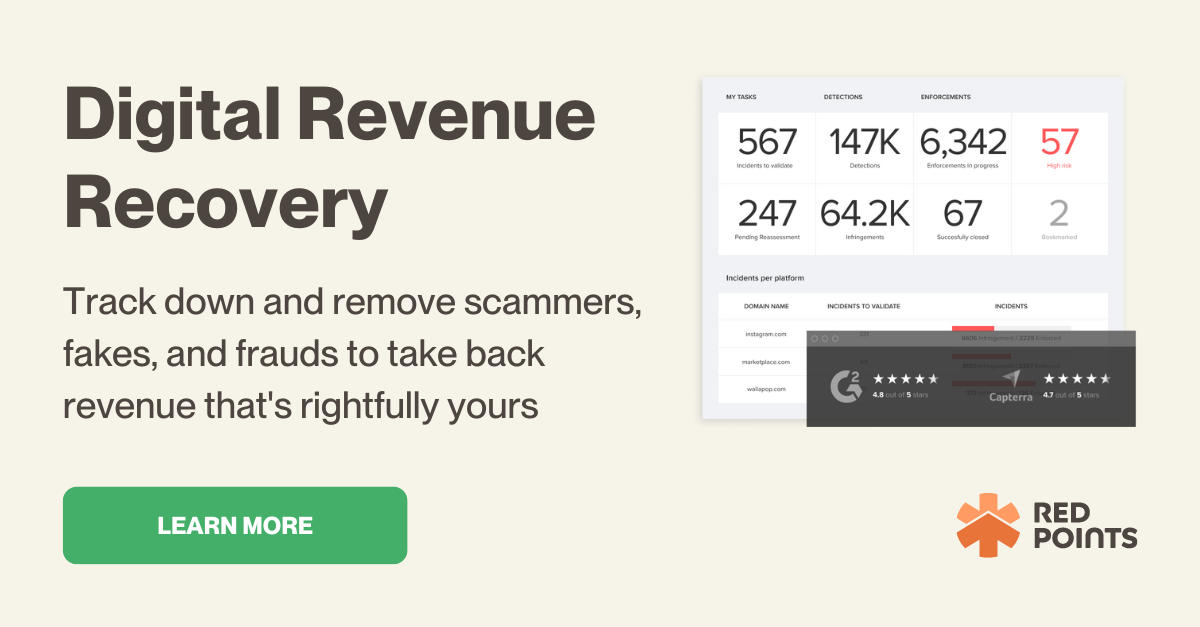
Table of Contents:
Last updated on: June 8, 2022
In the online retail space, a vast number of market participants are competing to sell their products. Business growth and improving the efficiency of distribution channels, therefore, requires an effective strategy, especially when entering unknown markets.
This article gives an understanding of pricing and distribution strategies, how to implement and maintain relationships between brand owners, distributors and sellers, as well as tools for keeping track of where and how products are being sold. It shows how agreements between business partners can be reinforced and ways to hold agreement violators accountable.
Summary
Companies use pricing strategies to position their products on the market. Usually, the price of a product derives from production costs and an added margin which determines profit.
There are three pricing options for businesses: charging less than; the same as; or more than their competitors. Competitive pricing generally comes into play when a product has been on the market for a long time and there are many competitors selling similar products. Accordingly, a competitive pricing strategy selects prices based on what the competition charges.
Setting lower prices for the same product narrows the profit margin and makes it more difficult for a business to grow. The decision to sell products at almost zero profit or even making a small loss is known as a loss-leader strategy.
Charging more than the competition requires companies to justify that higher price with extra features or better after-sale services, for example. When businesses charge the same price for the same product, they rely heavily on marketing and advertising tactics to find their customers.
What is a distribution strategy?
Alongside pricing a product and putting it on the market, developing a sound distribution strategy is key to ensure the product reaches its target customers. Companies may choose to sell and ship their products directly to the end customer, which entails higher investment costs for storage, delivery infrastructure, and staff. The other main distribution strategy is indirect and therefore needs a retailer or distributor.
Distributors are especially helpful when a company wants to sell its products in a territory with language and cultural barriers. Given the large differences in business culture between China and the west, for example, many companies choose to work with distributors with local knowledge. Distributors can simplify the process of initiating business, as well as sharing a network and insider knowledge with the manufacturer. However, relying on an external distributor network can mean that companies give away parts of control over product pricing distribution channels.
There are three important steps to consider when setting up a product pricing distribution strategy:
1. Set a Manufacturer’s Suggested Retail Price (MSRP)
The MRSP is the price a manufacturer recommends to retailers and should contain both the costs of manufacturing and selling. Although it is used to standardize the price of products, retailers often sell goods below the MRSP. This can happen when retailers intend to reduce their inventory or to get a competitive advantage to attract more customers.
2. Anticipate hidden costs
Besides the sales costs of goods, it is necessary to factor in hidden costs that could incur along the distribution chain. Distributors may charge for maintenance of the transportation fleet, tariffs, or storage costs. Furthermore, damages or product losses during shipments are also some risks to consider. Suchlike latent expenditures shrink margins and add complexity to the distribution pricing strategy.
3. Divide margins along the distribution chain
Until a product reaches the end consumer, every actor in the distribution chain aims to make a profit. Markups for manufacturers, distributors and retailers can vary drastically, depending on the industry and who is in charge of marketing. A good way to start calculating a margin for distributors and retailers is to factor in the services they render for distributing and selling a manufacturers’ product. Those services can include transport, storage, marketing or packaging, for example.
Choosing a competitive distribution strategy by outsourcing distribution and retail sale involves certain risk factors which are either price or compliance-related.
As mentioned above, retailers may not follow the MRSP and sell products below the suggested retail price. Because competitive pricing strategies select prices based on what the competition charges, retailers will follow suit if a competitor offers a discount. Especially for online retailers, repricing technologies automatically offer a discount on the product when other market participants lower their prices. Such a price war is harmful to retailers and resellers. This dynamic can also harm a brand’s value when loss-leaders sell products without any profit or even at a loss.
A solution for those risk factors is creating Minimum Advertising Pricing (MAP) policies. A MAP policy ensures that an item can not be advertised below a minimum price which is set in an agreement between manufacturers, distributors, and retailers. MAP policies benefit both manufacturers and retailers because it assures the retailers’ margin and prevents the devaluation of a brand.
Under a MAP policy agreement, retailers offer a brand’s product in the same price range so sales aren’t driven by continual discount offers. Thus, the performance of products and retailers becomes easier to track and analyze. These insights can be used to make strategic decisions about products and business partners.
Even if a MAP policy is set between brands and retailers, those agreements often get violated by retailers or resellers. MAP monitoring policies as well as having an enforcement framework in case of violations is essential. Implementing a technology-based MAP policy enforcement strategy ensures effective monitoring of the distribution network and holds policy violators accountable if necessary.
As competitive pricing always takes place based on what the competition charges, software tools are used to make pricing decisions, sustain prices and save margins. The same technology can also be used to alert sellers of non-compliance, identify best and worst performers to inform future agreements and safeguard a healthy distribution network.
As we have seen, a competitive pricing and distribution strategy offers benefits for growth and better business relations. However, the advantages can only be accomplished when everybody involved complies. As non-compliant partners sometimes violate MAP policies, a monitoring and enforcement tool is recommended to secure brand value and hedge against risks. Red Points Seller Tracking is an effective software solution that monitors product prices, analyzes how products are being sold online, detects unauthorized sellers and reveals their identity.
